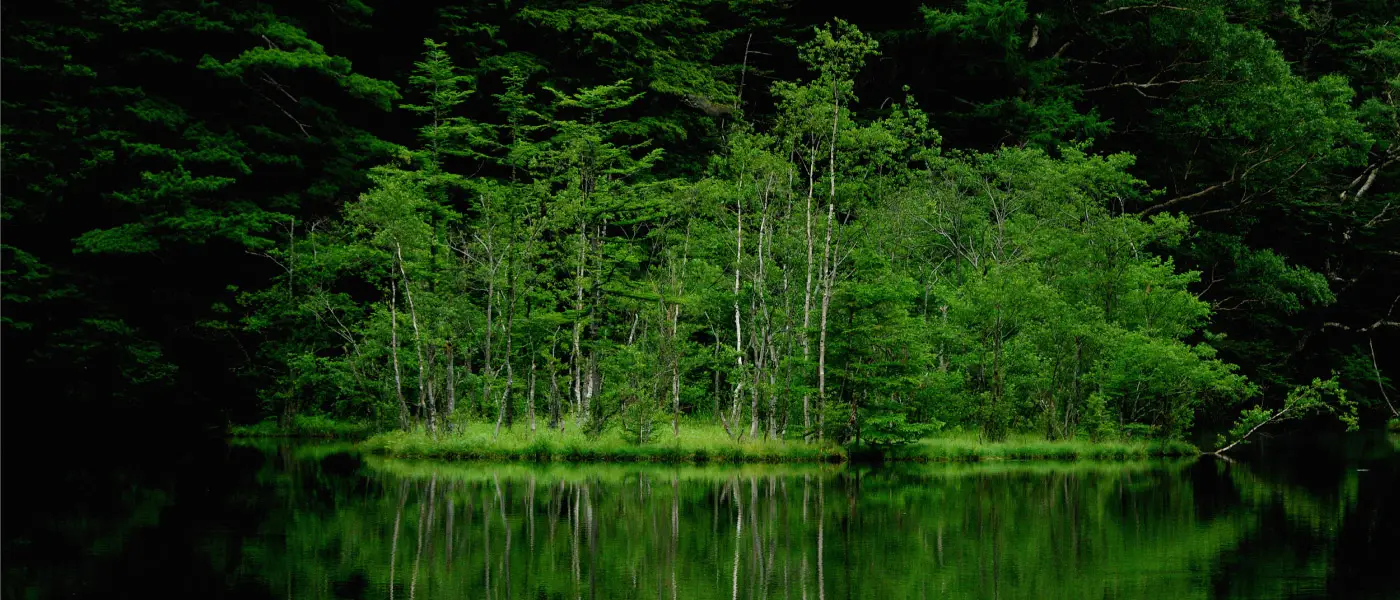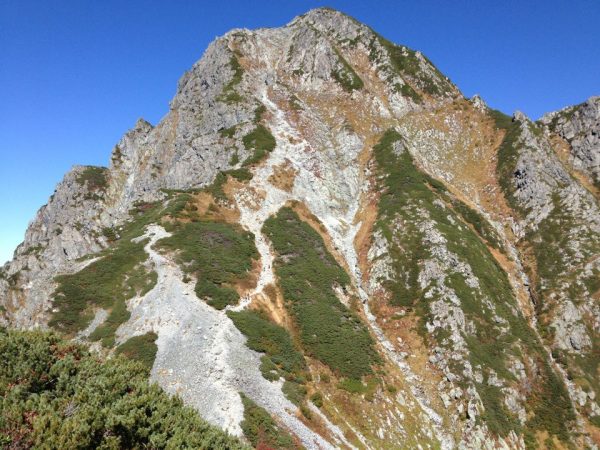
Mae-Tsurugi, a false summit on the way to Tsurugi proper.
We have created this guide to introduce some of the key features of the Hida Mountain Range, better known to English speakers as the Kita Alps or Northern Japan Alps. As our homepage and Facebook page both focus on Kamikochi, the Northern Alps are a source of primary interest for us and our readers. Here, we discuss the mountain range in a broad geographical context while also providing insights on some of the most popular peaks. Naturally, a brief guide can only cover so much of a big topic like this one, but we hope it answers more questions than it raises.
The five installments of this guide are as follows:
- History and Alpine Culture
- Major Peaks
- Popular Routes
- Safety
- Rules and Etiquette
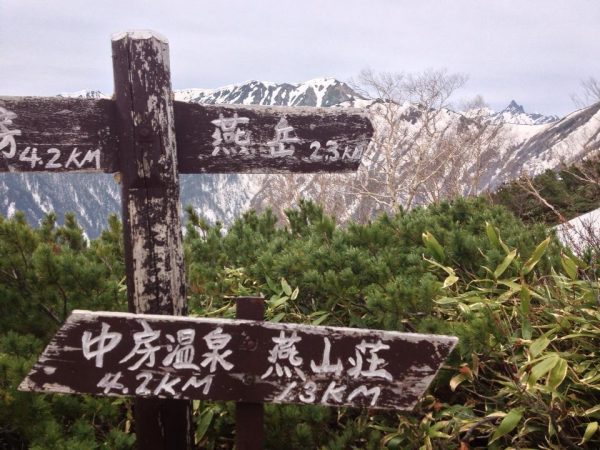
Part 1: History and Alpine Culture
The pre-history of the Japan Alps stretches all the way back to the tectonic activity that created them many millions of years ago. Long before anyone thought to climb them, mountains were objects of wonder, associated with divinity, as well as being natural boundaries between different areas of Japan.
A Note on the Name, "Alps"
The variety of names applied to the Hida Mountains causes some confusion among prospective visitors. The native Japanese name is 飛騨山脈 (Hida Sanmyaku, literally “the Hida Mountain Range.”) The first person to apply the term “Alps” to the Hida Mountains was an English engineer and archaeologist named William Gowland, who was among the first non-Japanese mountaineers in Japan. As such, the blanket term of Japan Alps for three mountain ranges in central Japan was both a foreign import and a later addition to the language--though not that much later as it turns out. Today these three ranges retain their original names as well as the newer alpine variants: Akaishi Mountain Range, Kiso Mountain Range, and Hida Mountain range are also called the Southern, Central, and Northern Alps, respectively.
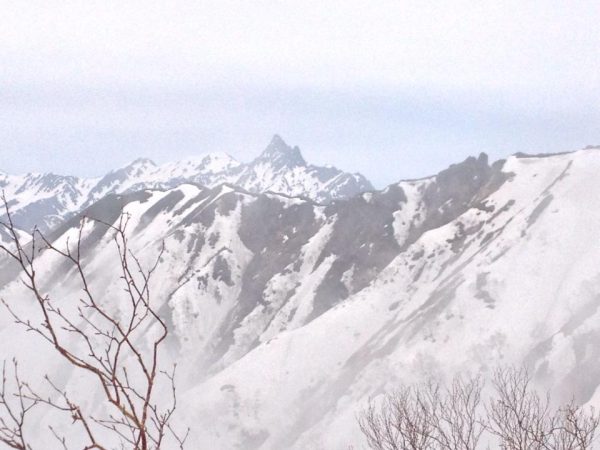
Mt. Yarigatake, as seen from the Omote Ginza traverse.
Alpine Origins and Precursors
One often repeated fact about alpine culture in Japan is that it began in the 19th century when figures like Gowland and fellow Englishman Walter Weston introduced the idea of recreational hiking and climbing. This development closely followed Europe's "Golden Age of Mountaineering (1854-65), in which the major peaks of Europe had been conquered one after the other. On arriving in the mountainous country of Japan, European alpinists naturally wanted to share their passion for climbing with the locals. Historically, the Japanese had viewed climbing mountains as a an ascetic practice, best suited to Buddhist priests and monks. In 1878, Gowland became the first foreigner to summit Mount Yarigatake. However, the first known person to have successfully reached the peak was a Buddhist monk called Banryu who managed the feat some 50 years earlier in 1828.
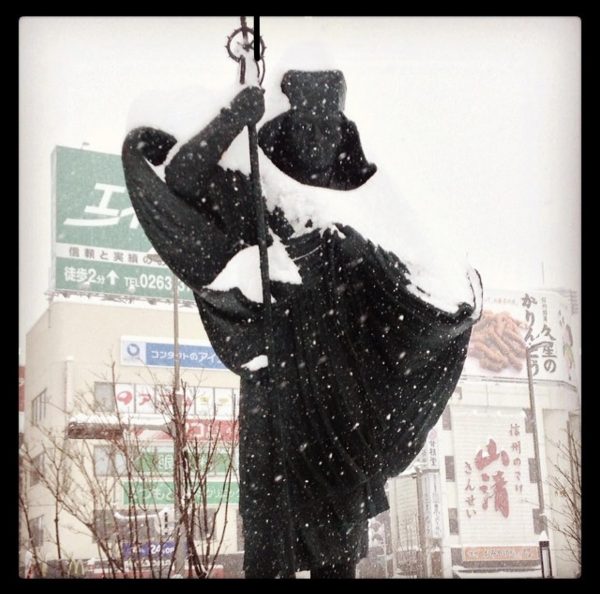
A statue of Banryu outside Matsumoto Station.
There is also evidence of much earlier expeditions to major peaks, as seems to be have been the case with Mount Tsurugi in Toyama Prefecture. The mountain itself had long been considered impossible to climb and was the only summit yet to be conquered when a party of Japanese mountaineers set out to do just that in 1907. On completing what they thought was the first successful ascent, they discovered a spear and the tip of a priest's staff on the mountain top. Archaeologists identified these items as dating either from the Nara Period (710-94 CE) or the early Heian Period (794-1185), suggesting that the actual first ascent had been done over 1,000 years earlier.
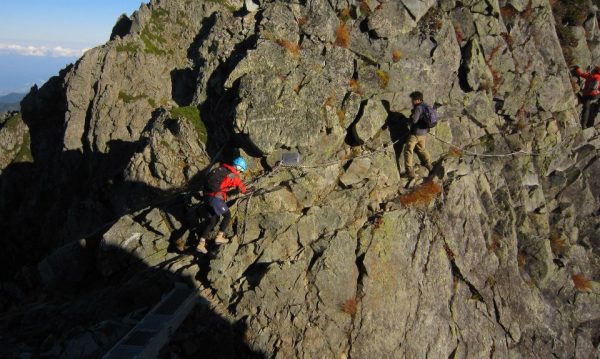
Navigating a perilous segment of the craggy approach to Tsurugi's summit. (photo: Hiramatsu).
Key Figures and Developments in Modern History
Turning our attention back to later history, we can consider a few key developments in the evolution of recreational hiking and climbing in the Japan Alps:
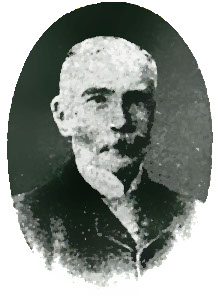
William Gowland
- 1878: Victorian mining engineer William Gowland tours the Northern Alps, successfully climbing Yari and other peaks. Gowland is credited with being the first to call the Hida Mountains the “alps” in the 1881 book, Handbook for Travelers in Central Japan. Notably, Gowland applied the term specifically to what we now call the “Northern Alps.”
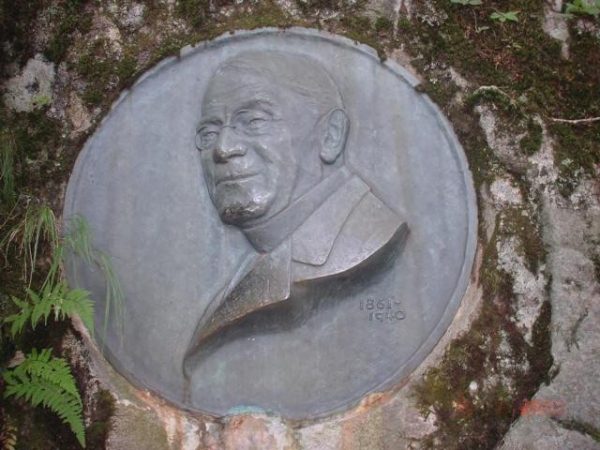
The memorial relief of Walter Weston in Kamikochi.
Photo by Ian Ruxton. Source: http://en.wikipedia.org/wiki/File:Reverend_Walter_Weston.jpg
- 1888: Walter Weston, an English missionary, arrives in Japan. In the following years, Weston will have a great influence on the emergence of recreational climbing and hiking in the Japan Alps.
- 1889: Geologist Harada Toyokichi coins the terms Akaishi, Kiso, and Hida for the mountain ranges now more commonly know as the Southern, Central, and Northern Japan Alps.
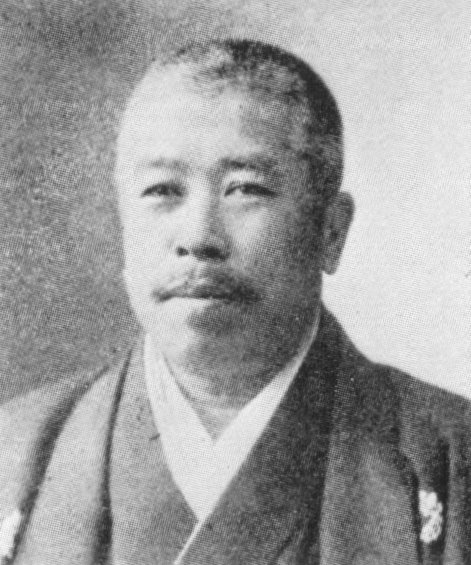
Shigetaka Shiga
- 1894: Journalist Shiga Shigetaka publishes Fukeiron (“On the Landscapes of Japan”), whose longest chapter focuses on mountain scenery and urges readers to “climb Mount Yari, by all means.”
- 1896: Weston publishes Mountaineering and Exploration in the Japanese Alps, becoming the first person to use apply the term "alps" to the Akaishi, Kiso, and Hida mountain ranges.
- 1902: Kojima Usui follows Shiga Shigetaka's advice and summits Yarigatake, later penning a series of magazine articles that help increase awareness of alpinism in Japan.
- 1905: After consulting with Weston, Kojima Usui founds the Japan Alpine Club, or Sangagkukai. A year later, they begin publishing a journal called Sangaku.
- 1907: An expedition led by Shibasaki Yoshitaro, Uji Chojiro, and Ikuta Nobu completes the first modern ascent of Mount Tsurugi, uncovering an ancient mystery in the process.
- 1934: A large area, encompassing the Hida Mountains is designated as The Chubu Sangaku National Park.
- 1963: Construction of the Kurobe Dam is completed at significant monetary and human cost.
- 1964: Fukada Kyuya publishes “Nihon Hyakumeizan,” (“One-Hundred Famous Mountains of Japan”) which increases interest in the Northern Alps and other locations.
- 1971: The Tateyama Kurobe Alpen Route is opened to the public.
- 2016: The inaugural celebrations for the new national holiday 山の日 (Yama no Hi or "Mountain Day") are held in Kamikochi.
Present and Future
As I write, interest in mountaineering in the Japan Alps continues to grow. Recent developments like the advent of the “Yama Girl” subculture and the creation of the Mountain Day holiday in August have helped broaden interest and participation in alpine pursuits. Additionally, Japan's mountaineering culture has produced such world class climbers as Tabei Junko and Miura Yuichiro, both famed for setting records on Mount Everest.
Join us next week for Part 2 of this series, as well as later in this week for our regular blog update.
Sources of Info and Helpful Links:
One Hundred Mountains blog: a concise summary of the Tsurugi enigma: https://onehundredmountains.blogspot.com/2011/12/tsurugi-enigma.html
One Hundred Mountains blog: some valuable insights on the historical figures behind the rise of Japanese alpinism: https://onehundredmountains.blogspot.com/2008/01/inventing-japan-alps.html
History Cooperative article on the history of mountaineering: https://historycooperative.org/reaching-for-the-heavens-the-history-of-mountaineering/
Notes on the history and culture of Kamikochi from our homepage: https://www.kamikochi.org/basicinfo/historyculture



